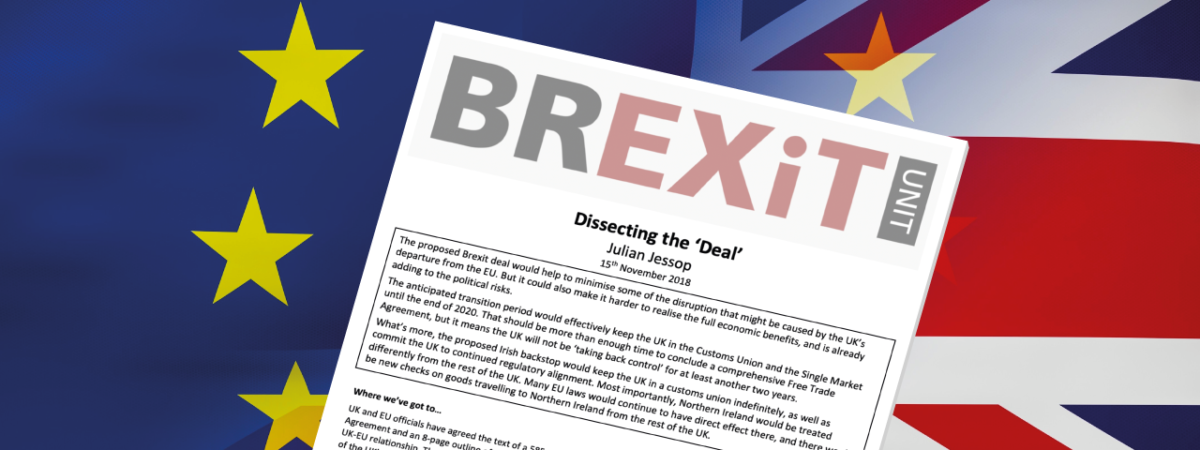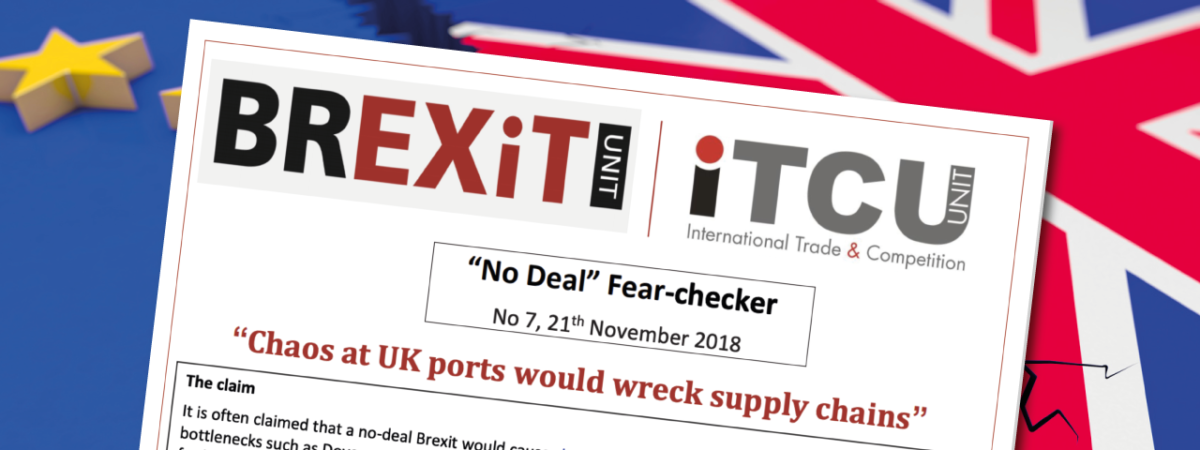Dissecting the Backstop
SUGGESTED



IEA's International Trade and Competition Unit releases briefing on the Backstop
- The provisions of the Protocol deliver what has become known as the ‘backstop’ for the Irish border. They come into effect if no other agreement that addresses the issues in connection with the Irish border has been reached by the end of the Transition Period on 31 December 2020, or any extension of that period. Although it is described as temporary, it would then apply indefinitely, unless and until another agreement is reached. Neither party has a right to terminate or amend it without the agreement of the other.
- Although both sides claim to want to avoid it, there is a real prospect of the backstop being activated, given that the parties have been unable to reach common ground on other solutions that would ensure no physical infrastructure on the Irish border.
- The Protocol comprises the whole of the UK being in a customs union with the EU, and Northern Ireland being directly part of the EU customs territory and subject to EU single market regulation on goods.
- The UK would also be subject to ‘level playing field’ provisions on tax, environmental, labour, competition and state aid laws. Northern Ireland would have more direct provisions on top of this in state aid, electricity, VAT and others.
- The effect of this will be to introduce trade barriers between Northern Ireland and Great Britain – by far Northern Ireland’s largest trading partner for exports and imports, as well as threatening the constitutional integrity of the United Kingdom by having Northern Ireland subject to the laws and institutions of the EU.
- It would also eliminate the ability of the UK to unilaterally pursue free trade by reducing tariffs, or negotiate trade agreements with other countries, as trading partners would not be able to know when, if ever, the UK would be in a position to change its tariffs, quotas or regulations. The Political Declaration and wording in the Withdrawal Agreement indicate an intention for the future relationship to continue the single customs territory in any event.
- The UK’s hands would also be tied in the WTO, as negotiations would have to be conducted in cooperation with the EU, and not with full independence.
- The Court of Justice of the European Union would have direct jurisdiction in Northern Ireland and would also have the final say on legal disputes under the Withdrawal Agreement with respect to the rest of the UK.
Fullscreen Mode




